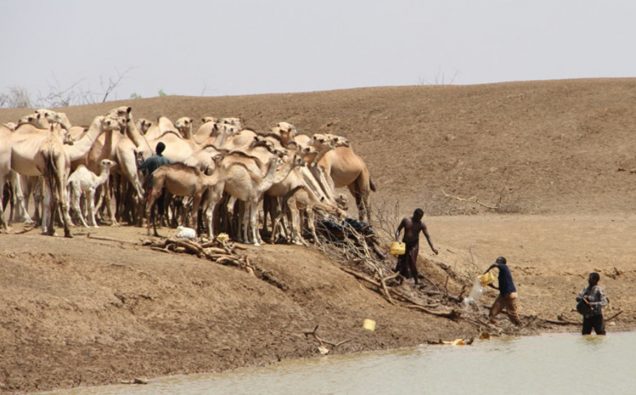
Another scary revelation on the state of the planet and dangers of drought is out with another warning.
The world is losing 24 billion tons of fertile land and consequently national domestic product of up to eight percent every year.
Coinciding with the World Day to Combat Desertification and Drought the UN says that by 2025 two-thirds of the world will be living under “water-stressed” conditions.
That means the demand will outstrip supply with 1.8 billion people at risk of experiencing absolute water scarcity.
“Migration is likely to increase as a result of desertification, with the UN estimating that, by 2045, it will be responsible for the displacement of some 135 million people,” the UN said on its website.
The World Day, which raises awareness of international efforts to combat desertification, was established 25 years ago, along with the UN Convention to Combat Desertification, the sole legally binding international agreement linking environment and development to sustainable land management, according to the world body.
“Desertification does not refer to the expansion of deserts, but rather the degradation of land in arid, semi-arid and dry sub-humid areas, primarily as a result of human activities and climatic variations.
“It happens areas of dry land are extremely vulnerable to over-exploitation and inappropriate land use. Poverty, political instability, deforestation, overgrazing and bad irrigation practices can all undermine the productivity of the land,” the UN said while releasing a call by Secretary General Antonio Guterres to pay attention to the issue.
Guterres says protecting and restoring land can “reduce forced migration, improve food security and spur economic growth”, as well as helping to address the “global climate emergency.”
Ibrahim Thiaw, the Executive Secretary of the UN Convention says there are only three things all people need to know about the World Day to Combat Desertification:
- It isn’t just about sand,
- It isn’t an isolated issue that will quietly disappear; and
- It isn’t someone else’s problem
“It’s about restoring and protecting the fragile layer of land which only covers a third of the Earth, but which can either alleviate or accelerate the double-edged crisis facing our biodiversity and our climate,” he said.
The international community, he says, has acknowledged the central role our land plays in our lives and livelihoods, and since the creation of the Convention, some 196 countries, including Brazil, Indonesia, China and India, as well as the European Union, have signed up to coordinated actions for sustainable land management.
“However, there are even more stories about how poor land management has degraded an area twice the size of China and shaped a farming sector that contributes nearly a quarter of all greenhouse gases,” he said.
There are even more stories about how half the people on the planet are affected by that damaged land or live in urban areas, consuming resources that require 200 times as much land as their towns and cities and generating 70 per cent of emissions, the official adds.
















